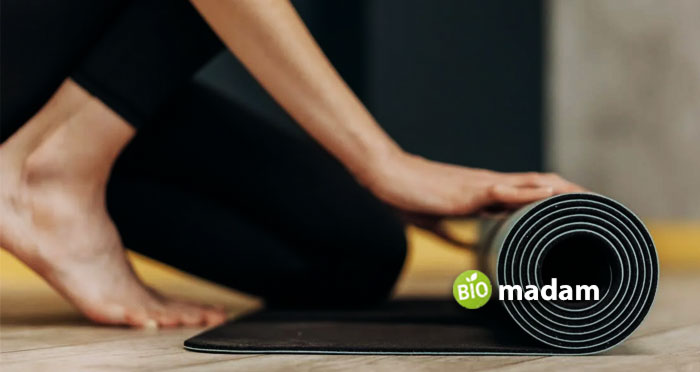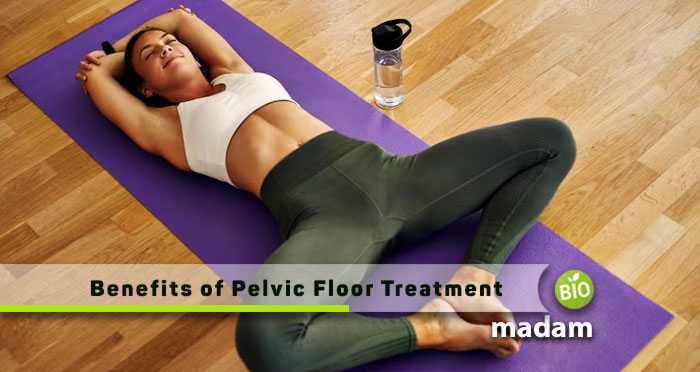Pelvic floor treatment is an effective way to address issues related to pelvic health, including urinary incontinence and pelvic organ prolapse. It involves the use of physical therapy techniques such as Kegel exercises, biofeedback, electrical stimulation, and manual manipulation to strengthen and relax the muscles in the pelvic area. This type of treatment can help improve bladder control, reduce discomfort during sexual activity or exercise, and even decrease pain associated with menstruation or childbirth.
Improved Bladder Control
Pelvic floor treatment can help improve bladder control by strengthening the muscles in the pelvic area. Strengthening these muscles helps to prevent leakage or incontinence because they are better able to support and hold in urine, leading to improved bladder control. Also, pelvic floor therapy can help reduce the sensation of urgency when needing to urinate. In addition, Kegels exercises can be performed as part of a pelvic floor treatment regimen to strengthen these muscles even further and provide added support for bladder control.

Reduced Discomfort During Sexual Activity or Exercise
By loosening tight muscles in the pelvic floor, it can improve flexibility and increase circulation to the area, reducing pain and making physical activities more comfortable. It can also help alleviate tension that often builds up with regard to both physical and psychological stressors that may impact sexual performance or enjoyment. Additionally, pelvic floor exercises have been found to increase arousal levels which for some women can further enhance their experience of sex. If tightness or pain persists, it may be necessary to consult a pelvic physical therapist for manual manipulation techniques that can help promote relaxation and improved functioning of the pelvic floor muscles.
Decreased Pain Associated with Menstruation or Childbirth
This is particularly beneficial to women who suffer from dysmenorrhea, which is a severe form of abdominal cramps caused by menstrual periods. Treatment for this condition often involves strengthening the pelvic floor muscles and improving muscle tone. Additionally, pelvic floor exercises can improve the alignment of the pelvic organs which helps relieve pressure and tension in the area resulting in less painful periods or childbirth experiences. While some of the pain associated with labor may not be prevented, pelvic floor exercises can help make the experience more comfortable.
Strengthened and Relaxed Muscles in the Pelvic Area can also Help to Relieve Pain
Pelvic floor treatment is a great way to reduce or eliminate chronic pelvic pain, as well as other issues like incontinence, urinary urgency and frequency, constipation, and even sexual dysfunction. While the benefits of this type of therapy vary from person to person, it is worth noting that many people have seen a significant improvement in their quality of life after receiving pelvic floor treatments. Additionally, these treatments are generally non-invasive which makes them an attractive option for those who wish to avoid surgery or medications.
Increased Confidence in One’s Body Image
Many people with pelvic health issues can experience a lack of self-esteem and body image. Through pelvic floor treatment, people can learn to control their muscles and feel more confident in their bodies. This self-confidence often leads to improved quality of life and general well-being. There are also various mental health benefits for those who go through pelvic floor treatment, such as improved mood and decreased anxiety. While these benefits are not immediate, they may become more noticeable over time. It is also important to note that this type of treatment should be tailored to the individual’s needs as everyone’s experience will be different.
Improved Posture Due to Stronger Core Muscles
This treatment can have many benefits, and one of them is improved posture due to stronger core muscles. After the pelvic floor has been strengthened through a series of exercises and treatments, the surrounding core muscles become stronger as well, providing greater stability to your spine and trunk. This leads to better posture because you are able to stand more upright instead of slouching or having poor posture. When you have better posture your body is able to move more efficiently and with less strain, which can help you feel better.
Reduced Risk of Urinary Tract Infections (UTIs) and other Related Issues
Also, the treatments can help reduce the risk of developing urinary tract infections by strengthening the muscles in the pelvic area. When these muscles are strong, they can help prevent leakage and better support the bladder and urethra, thus reducing the likelihood of bacteria entering your system and causing an infection or disease. Additionally, stronger pelvic floor muscles allow for more efficient urine flow which helps reduce the occurrence of UTIs as well.
What are the Symptoms of a Bad Pelvic Floor?
Some of the common symptoms of a weak pelvic floor include urinary incontinence, difficulty controlling flatulence, pain during sexual intercourse, and pelvic organ prolapse. There may also be feelings of discomfort or heaviness in the lower abdomen area due to weakened muscles. Other signs that your pelvic floor might need treatment include difficulty starting and stopping urination, or sudden urges to go without warning. Some people may also experience pain while sitting or standing for long periods of time.
For women who are pregnant or recently gave birth, it is especially important to pay attention to any changes in your pelvic floor health. After childbirth, the ligaments and muscles supporting the uterus can become stretched out leading to pain and instability. Pelvic floor exercises can help strengthen and tone the area, reducing the risk of postpartum urinary incontinence and other issues.

Pelvic floor treatment can provide numerous benefits to people who suffer from pelvic health issues. From improved bladder control to reduced pain associated with menstruation or childbirth, this type of physical therapy can help improve the overall quality of life. Additionally, it can lead to increased self-confidence and posture due to strengthened core muscles, as well as a decreased risk for UTIs and other related issues. If you think pelvic floor treatments may be beneficial for you, talk to your doctor about the options available and how they can help you achieve your health goals.

Hi, they call me Jenna, and I am also known for achieving a gold medal during my Ph.D. in science life. I always had a dream to educate people through my utmost writing hobby. So, I chose this blogging path, and Biomadam gave me this opportunity to present for them. I now stand to entertain you. Continue reading my articles & discuss if you’ve any confusion through the comment section below.

